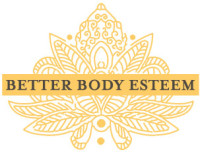
Yin yoga is a form of yoga where you hold postures for a longer period of time. Most of the practice time is spent on the floor, close to the earth. Yin is considered to be the darker, more grounded side of the yin/yang concept (literally “shady” or “cloudy”).
Holding postures is not always a comfortable experience, and so it builds tolerance for allowing ourselves to be in, and eventually embrace, that discomfort. Thus, this practice helps us to build resilience for dealing with challenges big and small.
This is a particularly wonderful skill for someone who struggles with their relationship with food and eating. It can be compared to surfing the wave of a food craving, or when you are uncomfortable in fullness. At the beginning it feels intolerable; you feel like the only way to make it go away is to give in and satisfy it. In the recovery and personal growth process, you learn how to endure the craving, almost embracing this uneasiness as it passes.
Yin yoga is a very effective therapeutic treatment for milder anxiety, addictions of all types, eating disorders, healing relationship with food, body and self. While it is offered in many yoga studios, it is important to work with an expert who is knowledgeable about whatever you are dealing with, since strong emotions can emerge during a session.
What does Yin Yoga do for the body?
Yin yoga works deep into connective tissues and into the bones and fascia, versus stretching or strengthening muscles. It can help with changing the actual architecture of the body, as well as helping to influence thoughts and emotions.
If you’re stuck in negativity, according to Chinese medicine, opening the kidney meridian can release anger and other negative emotions. We can help accomplish this in yin yoga with hip opening postures and other postures for the lower body.
Yin Yoga as part of a movement practice
Yin yoga is typically more of a restorative process, so must be balanced with more yang (active) forms of movement, whether yoga or otherwise. We need to strive to be in balance, both emotionally and physically. I tend to use yoga as my yin practice, and other forms of physical exercise as my yang practice.
Yin Yoga for eating disorder recovery
I often incorporate yin yoga into my workshops for people recovering from eating disorders. It is a beautiful practice, and provides a very meditative experience. It is also very adaptable and accessible for anyone.
For example, when I’m doing a yoga therapy group with people in early recovery from eating disorders or substance abuse, we have a shorter time and we may not hold the postures as long. Their bodies and brains may be getting out of the fog of addiction as they’re detoxing from substances.
In a yin yoga therapy group, I always include a theme that relates to recovery, e.g., grief and loss, shame, letting go, or cravings. As the participants are holding a posture, I speak about the topic, and sometimes read materials to them.
If you would like to learn more about yin yoga, watch this introductory video by Bernie Clark. There are also wonderful books by Sarah Powers and Paul Grilley.
